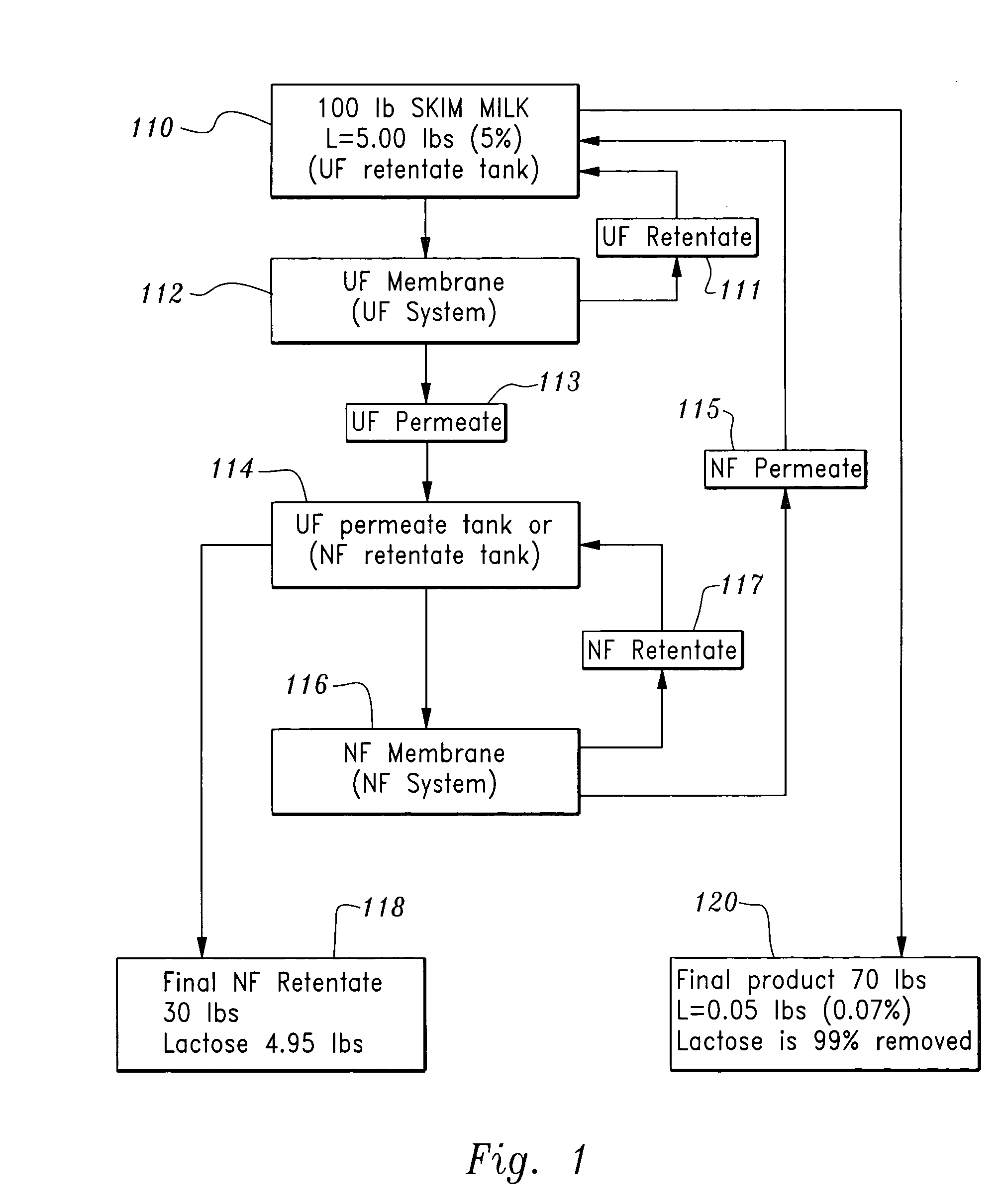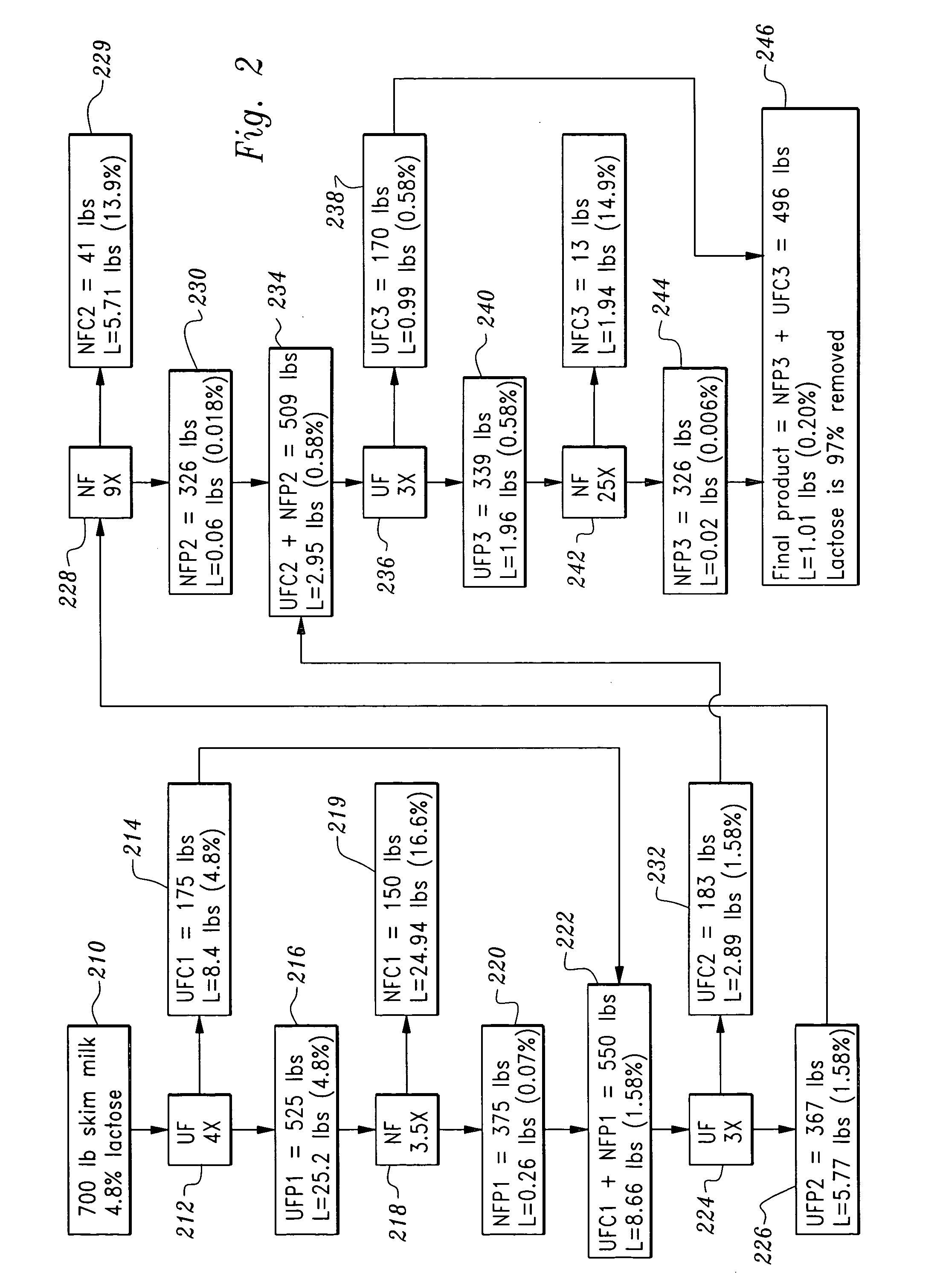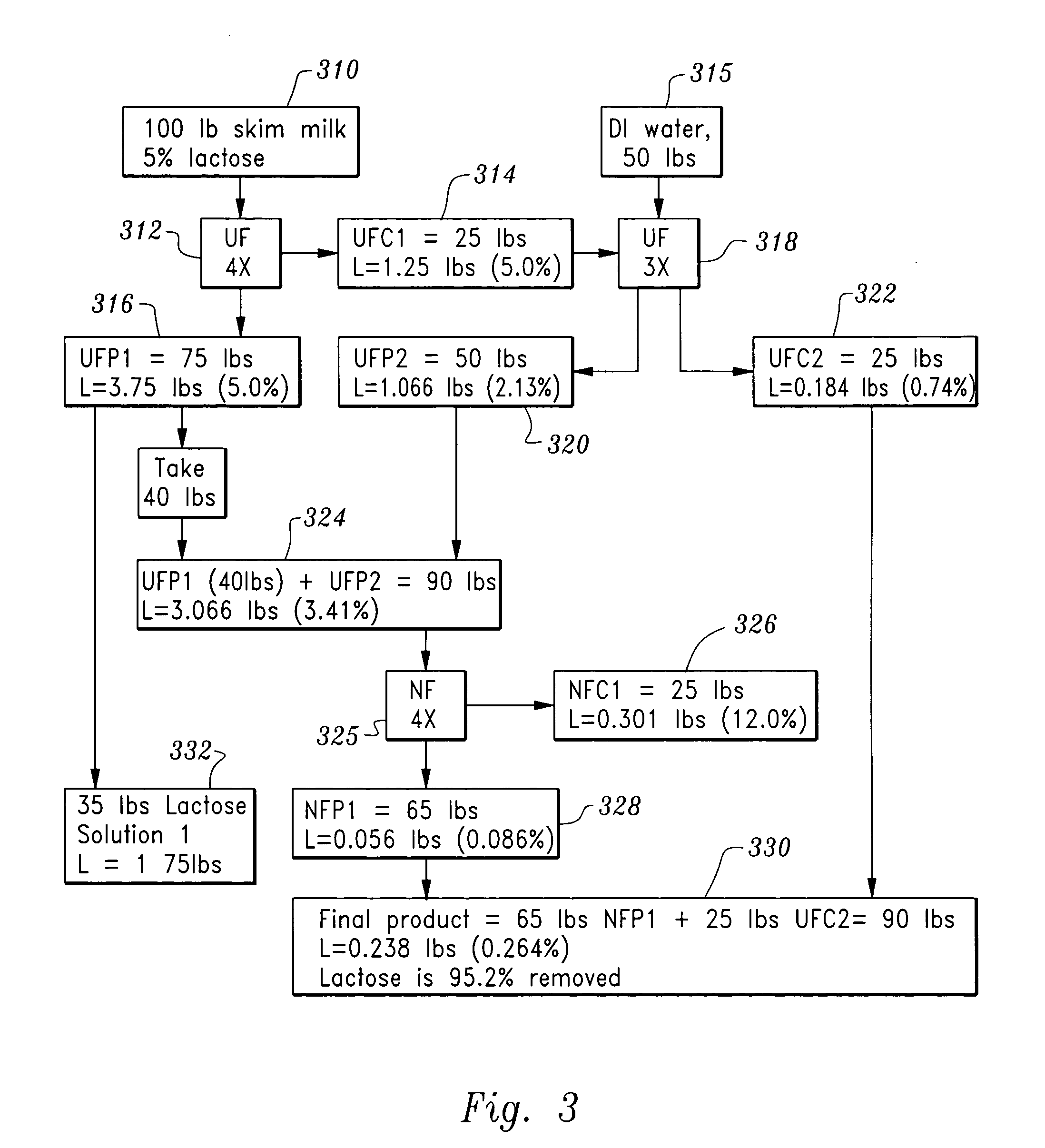Lactose-removed milk product and process for the preparation thereof
a technology of lactose removal and milk products, which is applied in the field of lactose removal of milk products, can solve the problems of gastrointestinal discomfort belching or flatulence,
- Summary
- Abstract
- Description
- Claims
- Application Information
AI Technical Summary
Benefits of technology
Problems solved by technology
Method used
Image
Examples
example 1
[0053]
TABLE 1Operation parameters of UF and NF for Example 1.Feed RateUnitInlet P (psi)Outlet P (psi)(GPM)Temp (F.)UF60302250NF240199450
[0054] The first example is a no-water added continuous process. It was carried out according to the UF and NF parameters for system inlet pressure, outlet pressure, feed rate and temperature illustrated in Table 1.
[0055] Referring to FIG. 1, a feedstock of 100 lbs of skim milk 110 is subjected to the inventive process. The feedstock has a lactose percentage of 5.0% or 5 lbs by weight. The feedstock is subjected to UF 112, which employs a membrane of 900 MWCO. A UF retentate 111 and a UF permeate 113 is created. The retentate 111 comprises mainly large molecular weight compounds such as fats and proteins like casein and whey, some non-protein nitrogen (NPN) materials, and minerals that are bound to large molecules. The permeate 113 comprises the small molecular weight compounds that pass through the UF membrane, such as lactose, minerals some NPN m...
example 2
[0061]
TABLE 2Operation parameters of UF and NF for Example 2.Outlet PFeed RateUnitInlet P (psi)(psi)(GPM)Temp (F.)UF60522250NF230197450
[0062] This second example is a no-water added batch process. Referring to FIG. 2, a feedstock of 700 lbs of skim milk 210 is subjected to the inventive process. The feedstock has a lactose percentage of 4.8% or 33.6 lbs by weight. The feedstock is ultrafiltered 212 until a retentate (UFC1) 214 of 175 lbs is reached under a concentration factor of 4×. The 525 lbs of permeate (UFP1) 216 was concentrated 3.5× with NF 218. The permeate (NFP1) 220 of 375 lbs was combined with the UF retentate (UFC1) 214 to form a 550 lb liquid 222, which is then ultrafiltered 3×224.
[0063] The 367 lb permeate (UFP2) 226 was nanofiltered 9×228 to generate 326 lbs of permeate (NFP2) 230. This permeate was combined with UFC2232 to form a 509 lb solution 234. This solution was then ultrafiltered 3×236 to generate 170 lbs of retentate (UFC3) 238 and 339 lbs of permeate (UFP3)...
example 3
[0065]
TABLE 3Operation parameters of UF and NF for Example 3.Outlet PFeed RateUnitInlet P (psi)(psi)GPMTemp (F.)UF60502450NF220199450
[0066] This third example is a water-added UF / NF batch process. Referring now to FIG. 3, a feedstock of 100 lbs of skim milk 310 is subjected to the inventive process. The feedstock has a lactose percentage of 5% or 5lbs by weight. The feedstock is ultrafiltered to 4× concentration 312 until 251 bs of retentate (UFC1) 314 is reached. A 75 lb permeate (UFP1) 316 was obtained. 25 lbs of retentate (UFC1) 314 was dia-filtered by adding 50 lbs of deionized (DI) water 315 at a rate equivalent to the UF permeate (UFP2) 320 rate. After all water is used, the retentate (UFC2) 322 remained at 25 lbs and the permeate (UFP2) 320 was 50 lbs. 40 lbs out of the 751bs of UFP1 were combined 324 with 50 lbs of UFP2320. This solution was nanofiltered 325 until 25 lbs of retentate (NFC1) 326 was obtained. The permeate (NFP1) 328 so obtained was 67.5 lbs. Next, 65 lbs of N...
PUM
 Login to View More
Login to View More Abstract
Description
Claims
Application Information
 Login to View More
Login to View More - R&D
- Intellectual Property
- Life Sciences
- Materials
- Tech Scout
- Unparalleled Data Quality
- Higher Quality Content
- 60% Fewer Hallucinations
Browse by: Latest US Patents, China's latest patents, Technical Efficacy Thesaurus, Application Domain, Technology Topic, Popular Technical Reports.
© 2025 PatSnap. All rights reserved.Legal|Privacy policy|Modern Slavery Act Transparency Statement|Sitemap|About US| Contact US: help@patsnap.com



